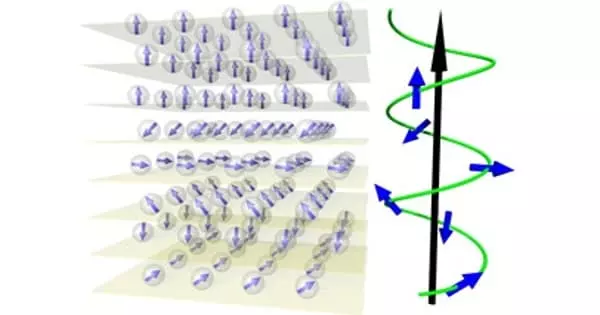A new experiment aims to establish the existence of a fifth state of matter. Dr. Melvin Vopson of the University of Portsmouth claims that information is the fifth state in an article published this week in the journal AIP Advances, and proposes a technique to evaluate this assertion. Solid, liquid, gas, and plasma are the four recognized states of matter, but Vopson has spent the last few years arguing that information is a physical substance that should be regarded as a state of matter in its own right. He originally presented the mass-energy-information equivalency concept in 2019, followed by a study in 2021 that computed the mass of information contained inside all observable matter in the cosmos.
Vopson claims that all basic particles retain physical information about themselves in the same manner that a live organism’s genome is recorded in its DNA, combining his theoretical results into a cohesive theory dubbed the information conjectures. To verify this, however, one would have to create a means for physically detecting this information. “How can we prove that if we suppose information is tangible and has mass, and that elementary particles contain a DNA of information about themselves?” In a statement, Vopson enquired. “My most recent publication is about putting these hypotheses to the test so that the scientific community would take them seriously.”
The amount of information in one electron, according to Vopson’s estimations, is 22 million times smaller than the particle’s mass. He claims that the only way to detect such a little amount of substance is to erase it. This entails eliminating that particle from existence, which can be accomplished by a “matter–antimatter annihilation process,” in which an electron and a positron collide and “mutually annihilate.”
“We know that when a particle of matter collides with an antimatter particle, they destroy each other. And when the particle is destroyed, the information it contains needs to go someplace,” explains Vopson. This information, according to his idea, should be emitted in the form of two low-energy infrared photons. When this annihilation reaction is done at room temperature, the wavelength of these two photons should be around 50 micrometers, according to the author’s estimations. He claims that detecting these photons would indicate the existence of physical information inside the two destroyed particles.
“This would be eureka moment because it would revolutionize the way we think about physics and enhance our knowledge of the cosmos.” “However, none of the existing rules of physics would be violated,” he claims. Vopson claims that such an experiment may be carried out simply using already available technology, and suggests that the requisite positrons be generated using radioactive sodium isotopes. “The successful detection of information energy photons… would corroborate both information conjectures,” he adds, adding that such a discovery would also “prove the presence of information as the universe’s fifth state of matter.”
















